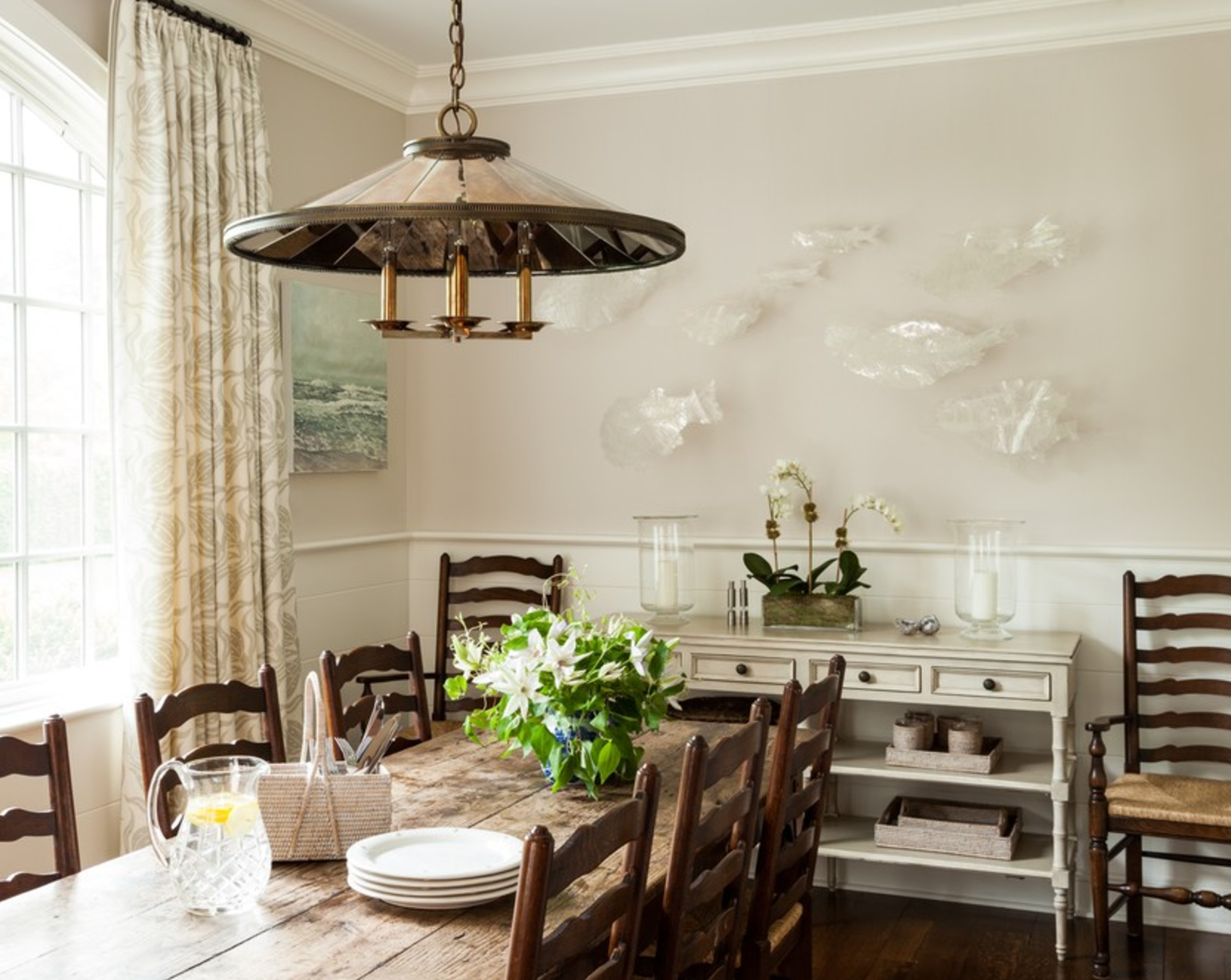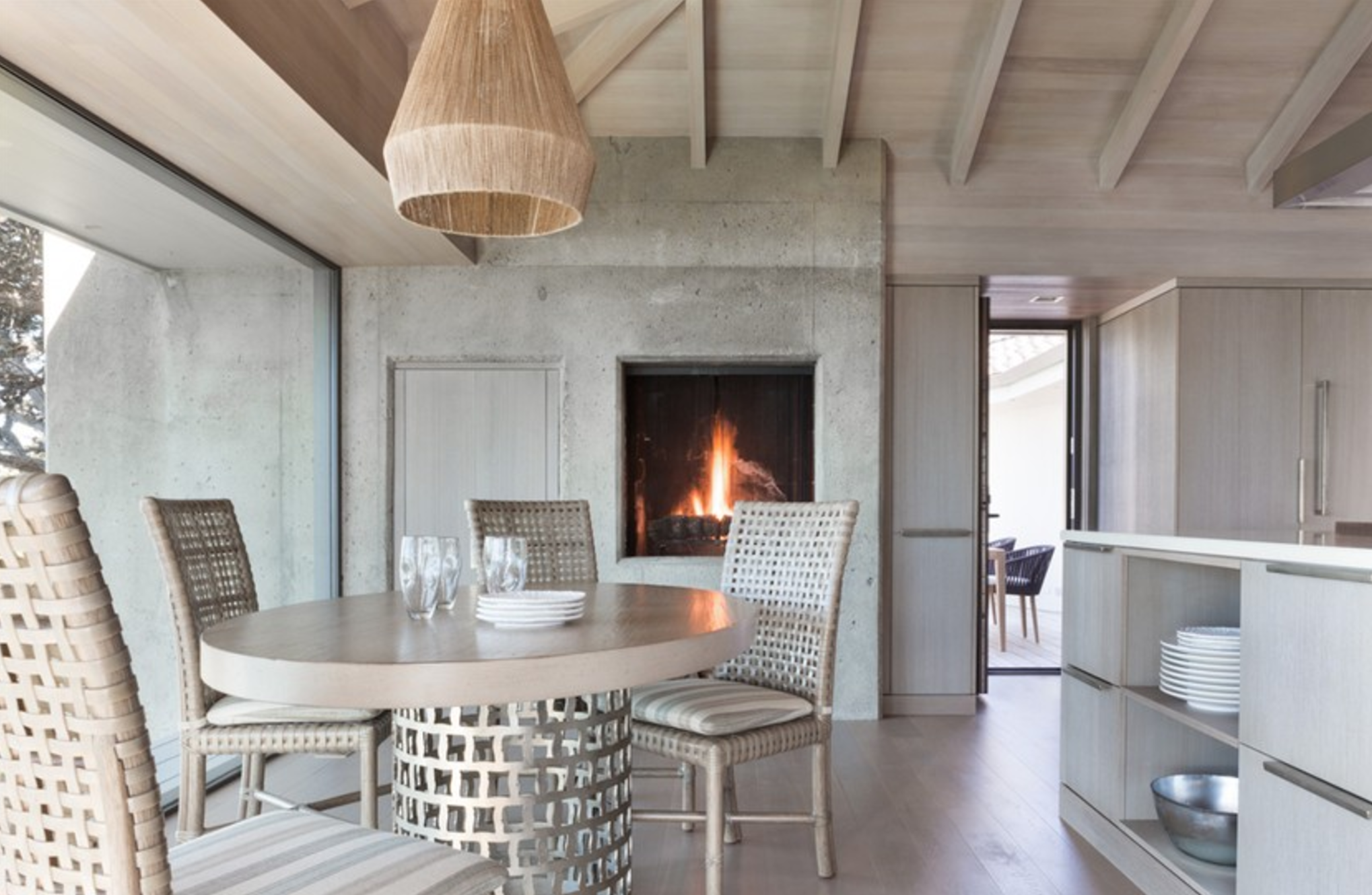Dining Table Buying Guide: How to Find the Perfect Dining Table for Your Space
Published September 6, 2017

Your dining room table is a major piece of furniture in your home: a spot that will serve as a gathering place for family dinners, conversations with friends, holiday celebrations, and perhaps the occasional craft project or homework marathon for years to come. So how do you choose the right dining table for your lifestyle (and personal style)? Gather ‘round as we serve up a step-by-step dining table buying guide.

Dining Table Buying Guide
The best place to start your search for a new dining table is by narrowing down the size and shape that will work best for your space and your lifestyle. Here’s how to figure it out.
Shape
The shape of your table should be determined by the dimensions and shape of your dining room. Round tables help maximize space in a square or small dining area, while rectangular or oval tables are best for filling out longer, more narrow rooms. Square tables are also a good choice for tight quarters, as most are designed to seat four people.

Size
The size of your dining table will depend on both the dimensions of your dining area and how many people you’d like to accommodate.
In general, each diner at the table should have about 24”-28” of space. For a round dining table, that equates to a minimum size of roughly 32” for four people, 46”+ for six, and 60”+ for eight. (To figure out if your table will be large enough, multiple the diameter by 3.14, then divide that number by 24, which will leave you with the number of people you can accommodate).
Of course, the number of chairs you fit around your table is also a matter of personal preference. If you don’t mind a more intimate setting, or have smaller children joining you at the table, you might be able to squeeze five people at a 32” table. On the other hand, if you prefer a roomier 28” of space per person, a 32” round table might be a tight fit for even four.
The 24” rule applies to rectangular and oval tables, too. However, the capacity of a rectangular table will be less than a similarly-sized round one. A 60” round table might fit eight, but a 60” long table will only accommodate six: two on each side, and one on each end. Common table dimensions and capacity are:
- 48” long: Seats 4
- 60” long: Seats 6
- 72” long: Seats 8
The other consideration when choosing a dining table size is the size of the room. The ideal measurement between walls and the table is 36-48”, which allows enough room to pull out chairs and maneuver around the table.
For the most flexible option, table leaves, which are inserted at the center of the table to expand its size, can add an extra 12-24” of space to a table.

Height
Most dining tables follow standard height guidelines and fall between 28-30”. Counter-height tables are around 36”, while taller pub-style tables fall in the range of 40-42”.
Bluestone Farmhouse Pub Table by Four Hands

Dining Table Material
You can find dining tables in a wide range of materials, but because you’ll likely use your dining table every day, the most important factor for any material is durability. Here’s an overview of some of the most common dining table materials and how you can expect them to wear and tear.
Wood
Wood is the most common choice for dining room tables. It’s durable, and can easily be updated, refreshed, or changed with paint or stain, plus on-trend weathered wood easily hides bumps and bruises. All of this makes wood a good long-term investment and unbeatable for families with young children.
Shelter Bay Table by Stanley Furniture

Veneer
The biggest plus for veneer tables is the value. Laminate tables are often less expensive than solid wood, marble, or glass, and they’re non-porous, which means they hold up fairly well to stains. However, unlike wood, MDF or veneered tables can’t be easily refinished if they scratch, chip or peel, and the surface may warp with excessive heat, so take care to use trivets.
Rachael Ray Shaped Leg Dining Table by Legacy Classic

Metal
Metal-topped dining tables bring an industrial, contemporary feel to a room. Metals are highly durable but prone to corrosion and patina. This means harsh cleaners should be avoided, and the table should be regularly polished with lemon oil or buffed with a metal cleaner.
Sanctuary Brighton Aluminum Dining Table by Hooker Furniture

Marble
Marble tabletops add a high-end feel to a room, but because marble is a porous natural material, marble tables also require regular care and vigilance. Even a spill on a sealed marble tabletop must be wiped up within a few minutes to prevent permanent staining. If you have young children or like to entertain a crowd, a marble table can prove high-maintenance (unless you decide to embrace the stains and spills as a marker of natural patina).
Lucy Round Dining Table by Four Hands

Glass
Glass-topped dining tables offer a sleek look that easily complements modern or contemporary spaces, they’re fairly low maintenance, and they’re hard to stain. And while breaking is always a possibility under excessive weight or force, present-day glass-topped tables are made with tempered safety glass meaning that, if they were to break, the glass wouldn’t shatter.
Salvador Dining Table by Arteriors

Dining Table Style
While function is important, your dining table should also be something that suits your personal style and complements the decor in the rest of your home. Some of the most popular dining room table styles include:
Farmhouse
Hardy wooden farmhouse dining tables are typically made of wood, and feature a rough-hewn top (often unfinished or distressed) resting on turned wood or X-base legs. The workhorse of dining tables is best suited for more casual spaces, and is an easy fit with shabby-chic, industrial, or cottage-style decor.
Durham Dining Table by Four Hands

Traditional
Traditional-style dining tables are made from wood, usually with turned or carved legs and finished in a high-shine stain or varnish. Pair them with ladder-back chairs for a country-take, modern or industrial chairs for transitional style, or skirted upholstery seats for a look that’s tried-and-true traditional.
Leesburg Leg Dining Table by Hooker

Pedestal
Pedestal tables are designed so the tabletop sits on a singular base at the center of the table instead of four legs. The style is most common for round tables, though it is possible to find square or rectangular pedestal tables too.
Artichoke Pedestal Dining Table by Stanley Furniture

Parsons
Like Shaker-style tables, Parsons tables are as no-frills as they get, featuring straight lines, angular corners, and a simple, neat silhouette. The clean look makes Parsons tables well-suited for modern or transitional decorating styles.
Post & Rail Dining Table by Four Hands

Midcentury
Midcentury tables are streamlined and lean, often combining warm-toned woods like Walnut with tapered legs. Their sleek shape makes them a perfect pick for small spaces.
Malinda Dining Table by Noir

Contemporary
Contemporary tables push the envelope on dining table design, often incorporating sculptural elements, non-standard or mixed materials, and on-trend styling. Contemporary tables look best with decor that’s equally modern and sleek.
Berlin Dining Table by Curations
